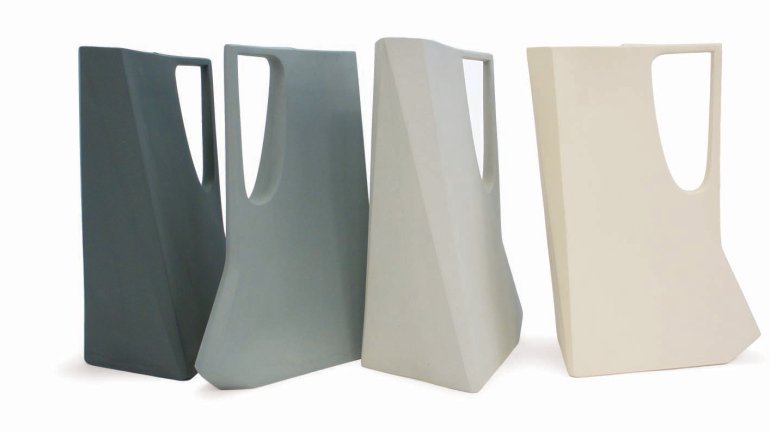Edgewood Made
Edgewood Made
David Short and George Dubinsky are on a mission to fill every room in your home with their deliberate, simple housewares.
The Edgewood Made co-founders connected in 2011 in the furniture design program at the School for American Crafts at Rochester Institute of Technology. Thanks to that foundation, “we’ve always seen the house as this cabinet that stores all these other levels of objects,” Dubinsky says. Their company’s first object: the signature wood-grain ceramic cup that Dubinsky originally designed for his thesis show.
Since then, the pair has designed and manufactured accessories and furniture including bowls, plates, flasks, vases, tables, and chairs – all produced in small batches at their six-person workshop in Philadelphia. The forms vary, but are united by Short and Dubinsky’s shared aesthetic and product philosophy.
Their approach emerged during a three-day, dead-of-winter camping trip in the Adirondack Mountains in 2011. “Everyone bailed except for George and me,” Short remembers. “So the whole time we were just hiking by ourselves, talking about craft and nature and how nature builds things.”
They observed, for example, how nature prefers sturdy obtuse angles – “the successful edge,” Dubinsky explains. Straight from the woods and into the workshop, Edgewood’s style is built on its earthen palette and balanced proportions, informed by the golden ratio.
“As long as we abide by our own set of beliefs and rules, everything just kind of creates itself. It’s that natural path of least resistance,” Dubinsky says.
“None of these rules are really steadfast. They’re our jumping-off point,” Short adds.
Case in point: Many of the Edgewood duo’s latest designs are inspired as much by their means of production as by their initial vision.
“I’ve been saying that our medium is manufacturing,” says Dubinsky. He points to their ceramic vase, which is cast in a two-piece mold that can leave a distinct line where the two halves come together. As Short explains: “Instead of trying to make that making process disappear, we embellished the seam and made it into a design detail.”
It’s in this process of refinement and discovery that Edgewood finds its groove, even as the two navigate among mediums and methods.
“What you learn from the process of one medium translates to your bag of tricks that you could take to the next medium,” Dubinsky says. “We’re just process guys.”
In the Groove
Two of a kind: Though co-founders David Short and George Dubinsky didn’t start working together until they met at Rochester Institute of Technology, they attended the same community college furniture design program, and later found out they had the same guitar teacher growing up.
Homage: Their company is named for Edgewood Road in Yardley, Pennsylvania, where Dubinsky grew up and started working with wood.
Inside out: The Edgewood Made workshop is adorned with rock-climbing holds that reconnect the pair to nature even when they’re surrounded by machines.
Part of the process: Edgewood ceramics have long been made in four muted colors, but the pair recently added a fifth: a combination of the other colors’ salvaged leftovers, for a marbled look. Says Short: “We didn’t wake up one day and say ‘Oh, we want to make these multicolored plates.’ Instead, we had all this leftover clay and said ‘What can we do with this?’ ”

